Cellular-Connected DIY Lab Incubator Monitoring System using XIAO RP2040
This cellular-connected DIY lab incubator monitoring system by Naveen aims to grant users effortless access to real-time data, alerts, and comprehensive reports concerning the incubator’s performance and status. By doing so, it guarantees the maintenance of a stable and regulated environment for microbiological samples, which is of paramount importance for ensuring precise and reliable testing results.
Seeed Hardware: Seeed Studio XIAO RP2040, Seeed Studio Grove Base for XIAO, Grove – VOC and eCO2 Gas Sensor – SGP30, Grove – Temperature & Humidity Sensor(SHT40)
Software: Arduino, Blues Notehub, Datacake
Industry: Biotechnology and Life Sciences, Pharmaceutical, Food and Beverage, Agriculture and Horticulture, Environmental Monitoring, Research and Educational Institutions, Healthcare and Medical Research, Chemical and Material Science, Industrial Research and Development
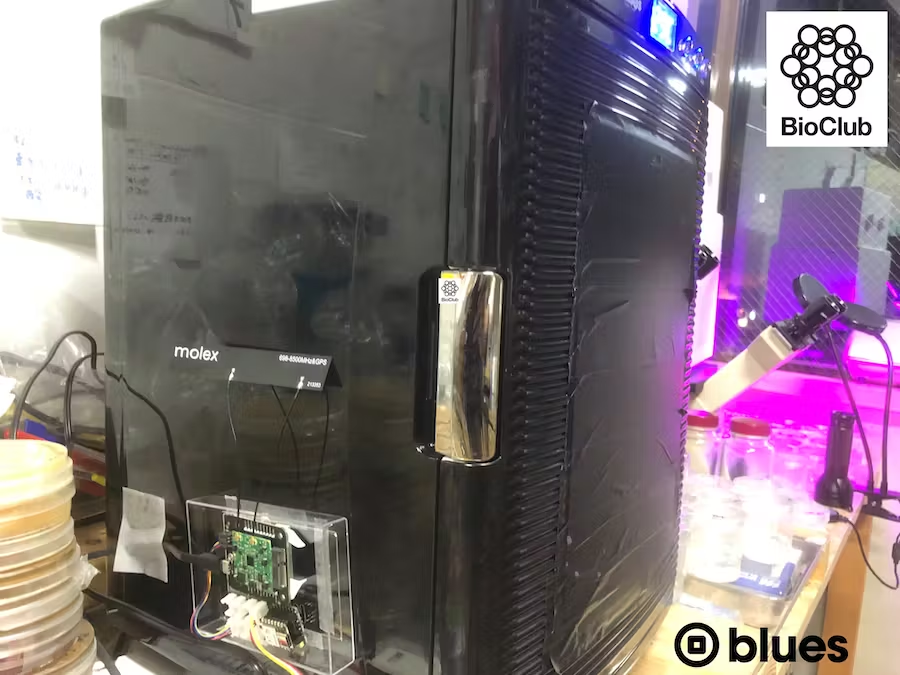
The Background
In the field of microbiology, an incubator plays a vital role in maintaining samples at the precise temperature required for their growth and development. This controlled environment ensures accurate testing and reliable results. However, to ensure the incubator’s efficiency and safeguard valuable samples, it’s crucial to implement a comprehensive monitoring system.
By constantly monitoring key factors like temperature, humidity, CO2 levels, light intensity, and airflow, laboratory personnel can uphold optimal conditions within the incubator. This proactive approach significantly reduces the risk of sample loss or damage caused by equipment malfunctions, power outages, human errors, or contamination incidents.
Embracing remote incubator monitoring technology empowers users with real-time access to critical data, alerts, and comprehensive reports on the incubator’s performance and status. This remote capability allows for efficient control, troubleshooting, and adjustments when necessary, enhancing overall operational efficiency and scientific research integrity.
The Challange
Precision and Sensor Reliability: Achieving accurate and reliable sensor readings is paramount to ensure precise monitoring. Any inaccuracies could disrupt environmental control and impact the integrity of experimental outcomes.
Data Transmission and Connectivity: Building a resilient and stable data transmission system is crucial for successful remote monitoring.
User-Friendly Interface: Designing an intuitive and user-friendly interface is essential for effective data visualization and control. Users should be able to interpret data easily, receive timely alerts, and make necessary adjustments to maintain ideal conditions.
The Solution
Hardware Selection
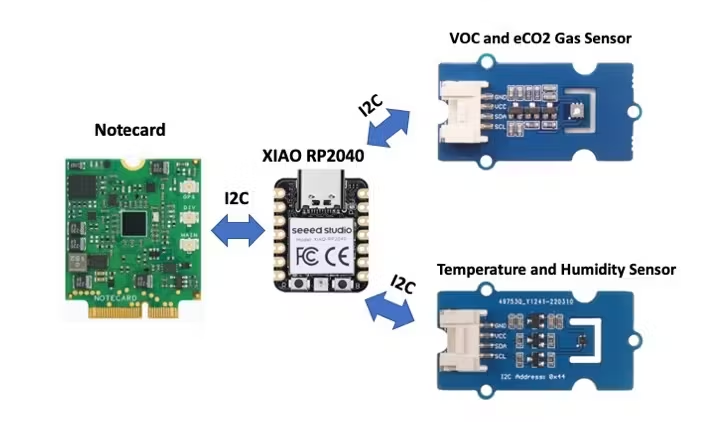
To address the challenges of network connectivity and data privacy, Naveen opted for a cellular-based solution. With cellular networks, data remains encrypted, ensuring utmost privacy. Additionally, the range limitations of Wi-Fi are overcome as cellular connectivity allows devices to connect from anywhere with a cellular signal.
For dependable, energy-efficient, and easy handling of network connectivity, Naveen utilized the Blues Cellular Notecard and Notecarrier-B. Notecarriers offer breakout connections for the Notecard, as well as circuitry to provide power management, protection, and signal amplification. The XIAO RP2040 serves as the ideal host MCU for the Notecard, enabling seamless connections to sensors through the Grove Shield without requiring any soldering.
To ensure a secure and organized laboratory setting, Naveen ensured there are no loose wires present. For precise temperature-sensing capabilities, Naveen incorporates the Grove Temperature & Humidity Sensor (SHT40).
Hardware Assembly
In this project, Naveen repurposed a small, affordable, and portable refrigerator as a DIY incubator. The incubator was modified to accommodate sensors by creating a slender pathway for sensor connectors. These sensors were mounted inside the incubator.
To integrate the Notecard, he gently inserted it into the M.2 slot on the Notecarrier-B and secured it with the provided screw. The cellular antenna’s u.FL connector was connected to the MAIN socket on the Notecard. Power was supplied to the Notecard through the USB connector on the Notecarrier-B. For the host MCU, XIAO RP2040, power was delivered via one of the Grove I2C connectors through the Notecarrier-B’s Qwiic connector. The host MCU communicated with the Notecard using the I2C protocol through the Qwiic connector. The sensors were connected to the other Grove I2C connector through a Grove I2C Hub.
To ensure a safe and secure setup, Naveen used an acrylic plate attached to the outer side of the incubator with double-sided tape to mount the assembled hardware. The resulting system provides a functional and cost-effective solution for incubation purposes.
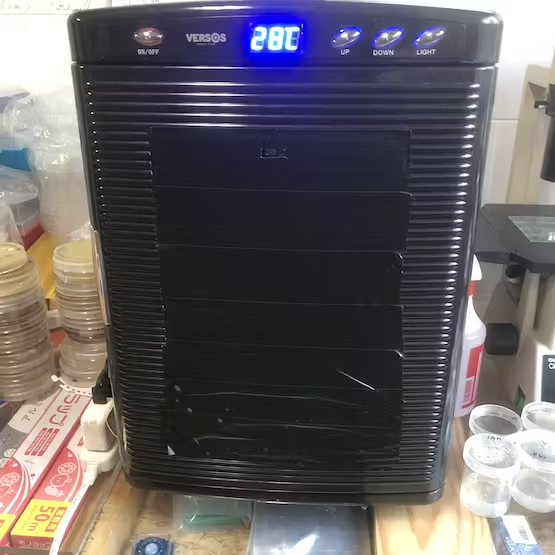
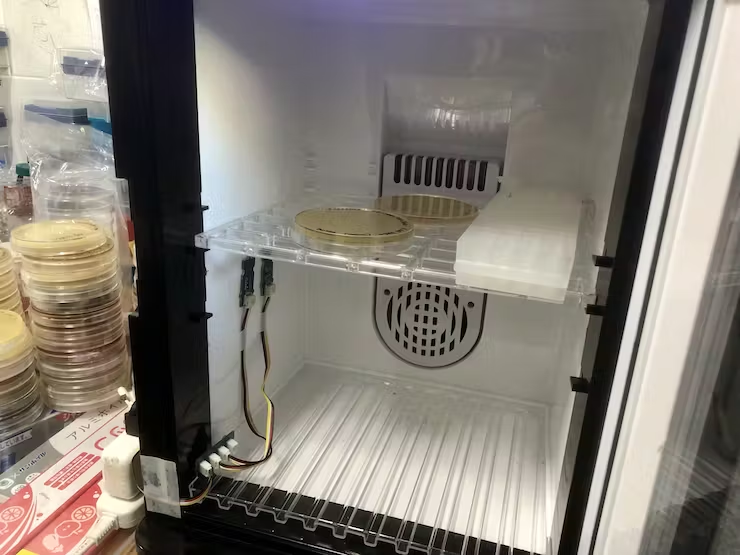
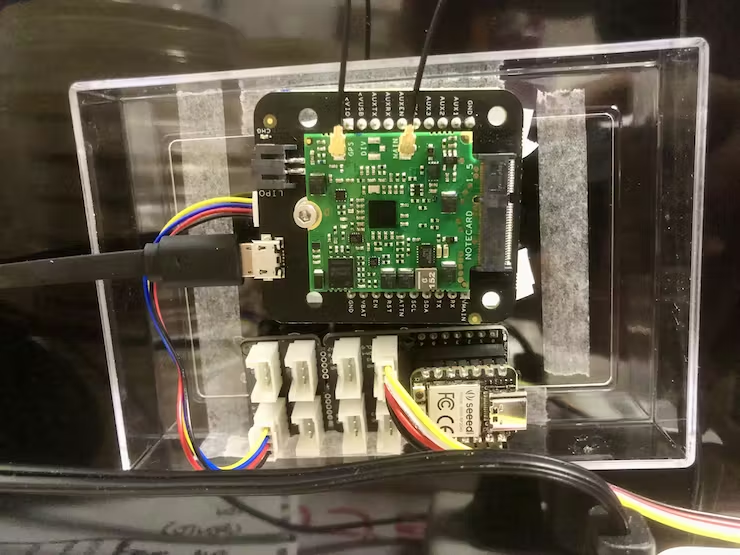
Notehub Setup
And then, he created a free account at https://notehub.io/sign-up to set up Notehub, which is a cloud service that receives data from the Notecard and allows to manage the device. Next, he created a Datacake account to receive data from the Notecard and display real-time sensor data.
To improve data visualization, Naveen implements a dashboard featuring Value and Chart widgets in Datacake. This will enable users to easily view updated sensor data values on an hourly basis and access a temperature chart displaying data for the past week.
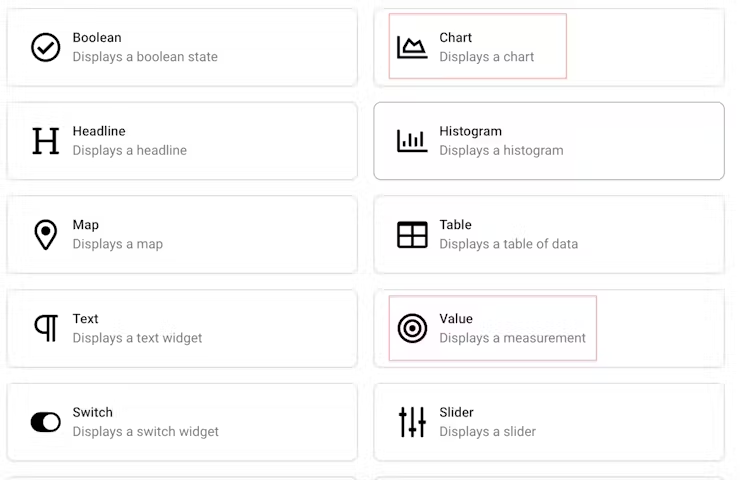

The Results
In this project, Naveen has devised and executed a system, leveraging cellular network technology to enable remote monitoring of a lab incubator’s vital parameters, including temperature, humidity, and gas concentration. This system proves to be an invaluable tool for researchers, allowing them to closely monitor their experiments within the incubator, all while being geographically removed from the laboratory premises. Not only does this setup offer unparalleled convenience and flexibility, but it also holds tremendous potential for broader applications by accommodating diverse sensor types for varying scientific purposes. Moreover, this versatile system comes equipped with an alert mechanism, which promptly notifies researchers via SMS or email in case the temperature or humidity surpasses pre-established thresholds.
More Information
Learn More Project Details on Hackster: Monitoring DIY Lab Incubators via Cellular Networks
Please feel free to reach out to [email protected] for any inquiries or if you’d like to engage in further project discussions. Your questions and interest are welcomed.